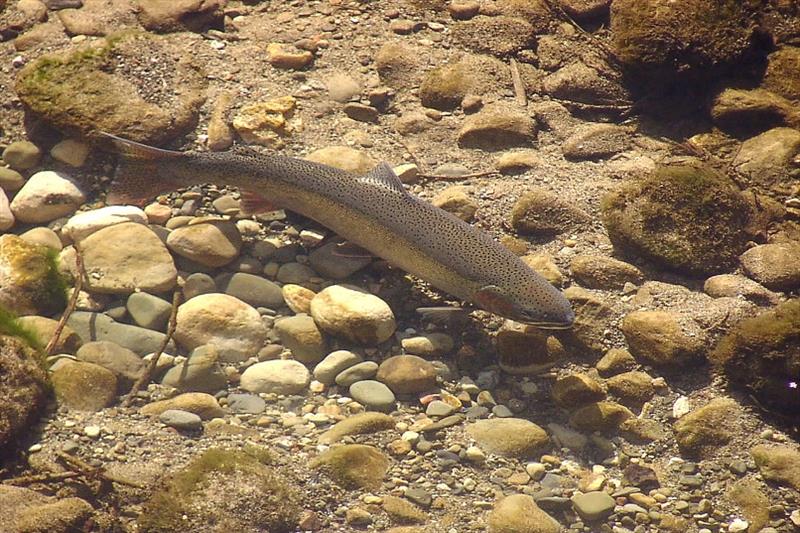
Southern California’s endangered steelhead and abalone are forgotten treasures
by NOAA Fisheries 16 May 2019 14:13 UTC

Endangered Southern California Steelhead in its stream habitat © USFWS
The remnants of endangered Southern steelhead trout, white abalone and black abalone populations have dwindled from overharvesting and habitat degradation. They're so rare that they have become forgotten coastal treasures. NOAA helps recovery of these species by working with partners to restore their important habitats.
Abalone and steelhead live within southern California. Their critical habitats span from headwaters in the coastal mountains to the ocean and its kelp forests. These once iconic species also live alongside 22 million people, including the native Chumash people who have lived in Southern California for more than 7,000 years.
The three species have significant historical importance to native Chumash. Aside from historically harvesting abalone for its sweet and nutritious meat, the Chumash used the shells as currency. Today, they still use them for bowls, jewelry, in healing ceremonies, and carve them into hooks for fishing.
Steelhead were a critical food source and still an important symbol to the Chumash peoplerecognized for their simplistic beauty. A long heritage of fishing and harvesting of these species extends to southern Californians in modern times prior to the species decline. A generation ago anglers fished for steelhead themselvesor remember their parents doing sobut they no longer have that opportunity because the fishery is closed.
Abalone are critical to the area because they are key indicators of ecosystem health. Black abalone live in the intertidal zone, while white abalone live in deeper kelp forests. If their populations are healthy, that generally means water quality is good, and food webs are intact. White abalone, a NOAA Species in the Spotlight, are among the most at risk of extinction in the near future. NOAA Fisheries developed five-year action plans outlining opportunities to stabilize the species populations and prevent their extinction. NOAA also collaborates with partners like the Aquarium of the Pacific and The Bay Foundation to support abalone monitoring and outplantingincluding innovative pilots to help with success.
Steelhead use Southern California rivers and estuaries for their homes. These waterways are heavily impacted and often blocked by dams or covered in concrete, no longer accessible as habitat. But, Southern California rivers and streams are critical because they're the only homes the species have. NOAA and partners' Southern Steelhead Recovery Plan identifies opportunities for removing barriers to fish migration, conserving water to help return flow to streams, and restoring estuaries vital to juvenile steelhead survival.
Like any fish or wildlife in decline, learning about Southern California's forgotten treasures is one way to ensure these species are never forgotten. If you live or visit there, stop by the local nature center or aquarium to learn what we all can do to help protect and restore the sensitive habitats abalone and steelhead call home.